Today we're going to talk to you about pool aiming systems! First, we're going to talk about the ghost ball aiming system, usually for beginner, but in my opinion still one of the most efficient. Second we are going to cover the parallel method, which is really good especially for long cut shots. Third one we're going to cover a little introduction to CTE (Center-to-Edge Aiming System), which is in fashion right now. And last we're going to talk about the H.A.M.B. system, which is pretty much the best of all. Let's get this started.
Ghost Ball Aiming Method: Easy and Effective Aiming for Pool
The ghost ball system is pretty much the main aiming method for most pool players. I'll say 95% of people use it, from very beginner to very high caliber players. The “ghost ball” is basically an imaginary ball. Let's pretend we have this situation here, cue ball down here and three ball out here. The idea is to make the three ball in the corner, which is a pretty simple shot. But in our case we're going to try to analyze how it works.
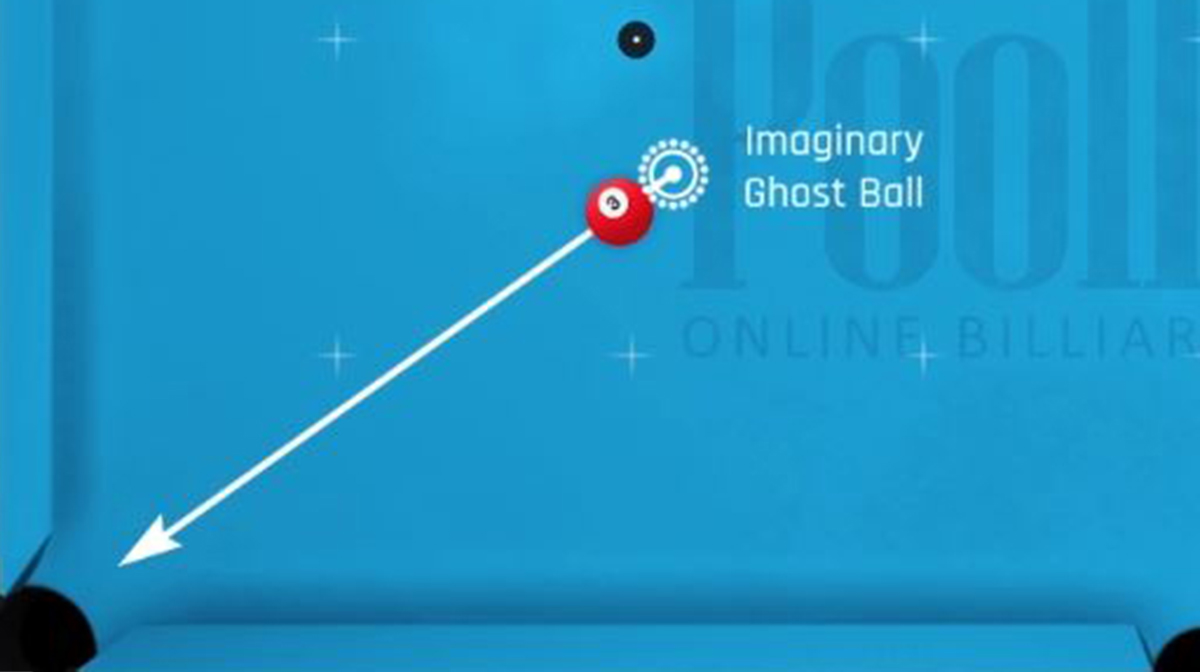
I'm going to draw a line from the center of the corner pocket into the center of the three, and then I'm going to put the five ball lined up with that line. That means the center of the five is still in line there. I'm going to leave that here for a second. The five ball is representing my ghost ball, that's an imaginary ball that the cue ball is going to replace when you shoot it. Now, that being said, you have to also make sure that aiming for the center of the five and not the other side, because that's a little tricky there.
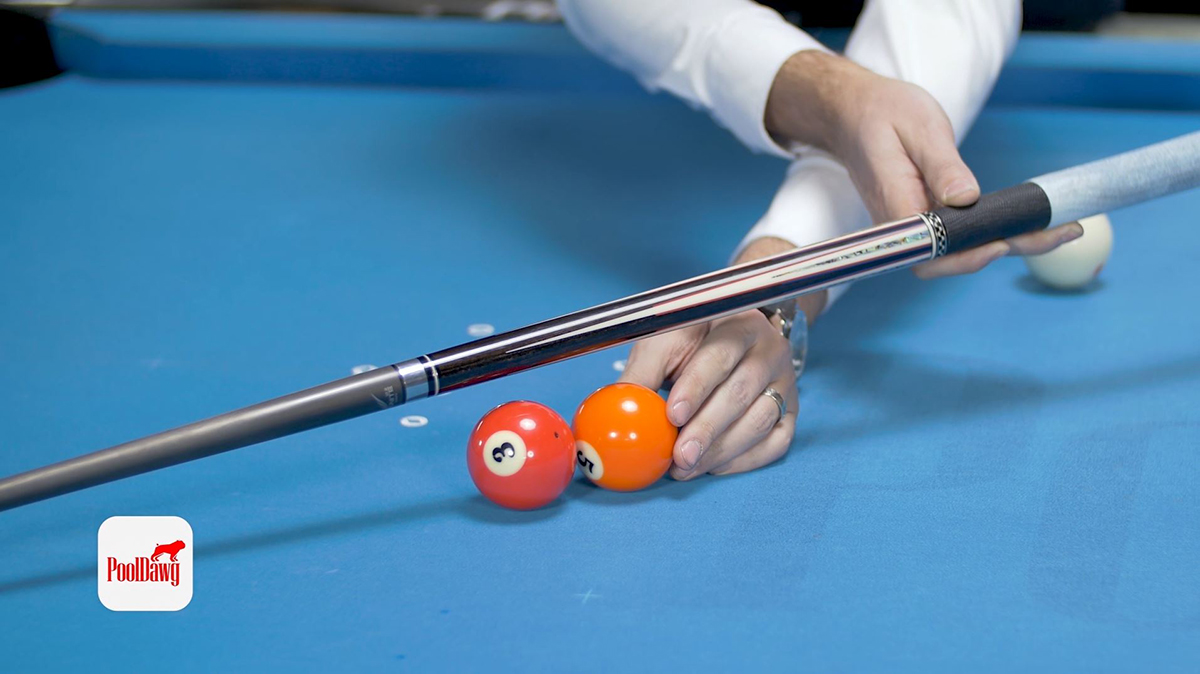
I'm going to let Valerie aim; she's going to replace the cue ball into the five ball. I'm going to take the five ball out, and then we're going to make the three ball. As you can see this works very well, very efficient method, works for pretty much any side on the table, anywhere on the table.
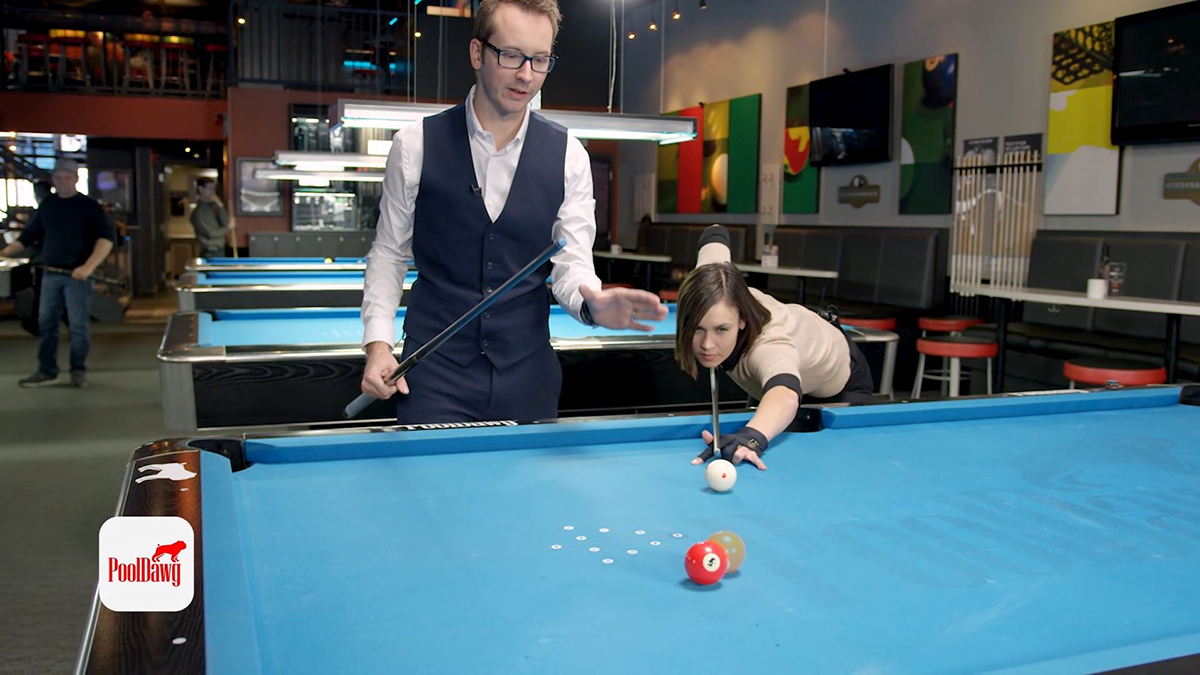
The bigger problem to me, using ghost ball, and why you might want to have more than just the ghost ball system, is when it gets to distance (long shots). Speaking about distance, your ghost ball is going to get a lot smaller the further it is, meaning you're going to have a harder time to find the aiming spot on that ball. The next drawback is because the ball is not flat. If we're looking at it here, you have to think about it as a round, a circle. You're very rarely going to hit the center of this ball; it's going to be very difficult. And that means if you hit a little bit left or right it's going to change your aiming and change the way you're going to hit that second ball, which is going to usually cut it more.
This is why some shots feel like the ghost ball is perfectly in line, but you still might have to hit them fuller or a little thinner. But once you understand that, it's a very efficient system. In my opinion, there's not much better, and it allows you to make a ball from pretty much anywhere on the table. And all it is, is practice, and just hit the balls.
The Pivot Method for Ghost Ball Aiming
Here I'm going to shoot the one ball into the corner. So here again, I'm going to imagine the ghost ball in the corner. Then I try to visualize the center of the ghost ball through to the pocket. I pivot to the cue ball, and then I'm going to shoot the cue ball into the center.
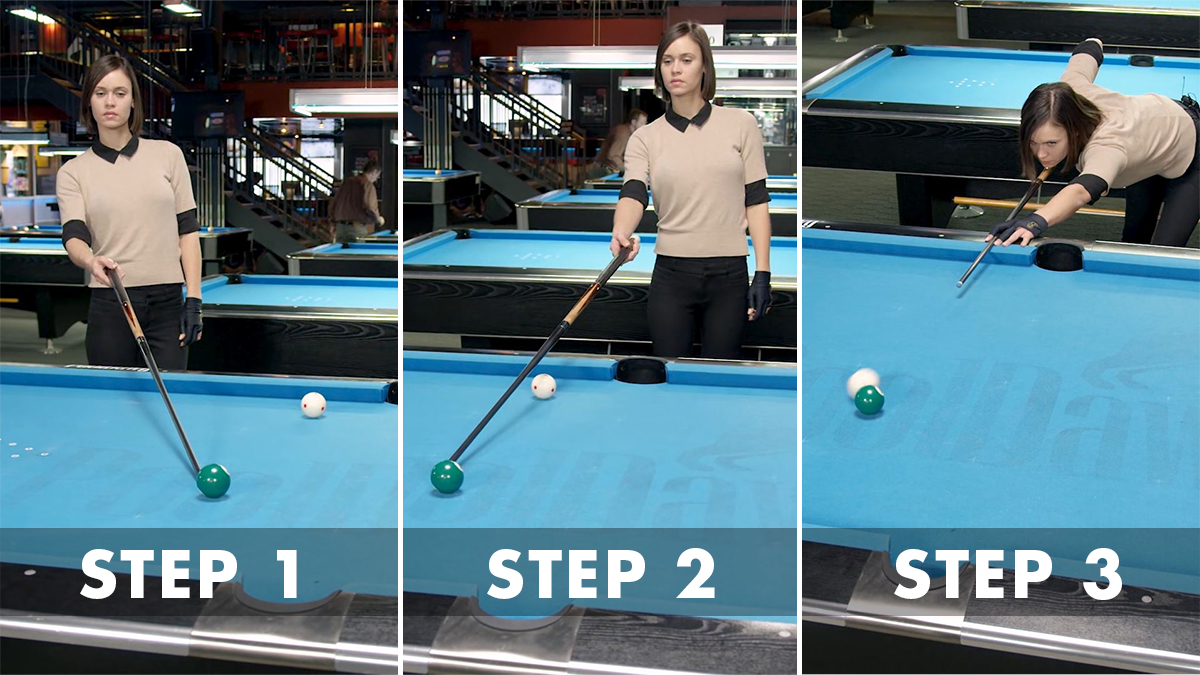
The Parallel System: Aiming for Thin Cut Shots
This is, in my opinion, a great system for long thin cut. The goal of the shot here we see is to shoot the cue ball, thin cut here the five into the corner. It's not that difficult of a shot, but it's going to be easier to explain. First we're going to have Valerie go and draw a line from the back of the five ball into the center of the corner pocket. You’ve got to be really close to it.
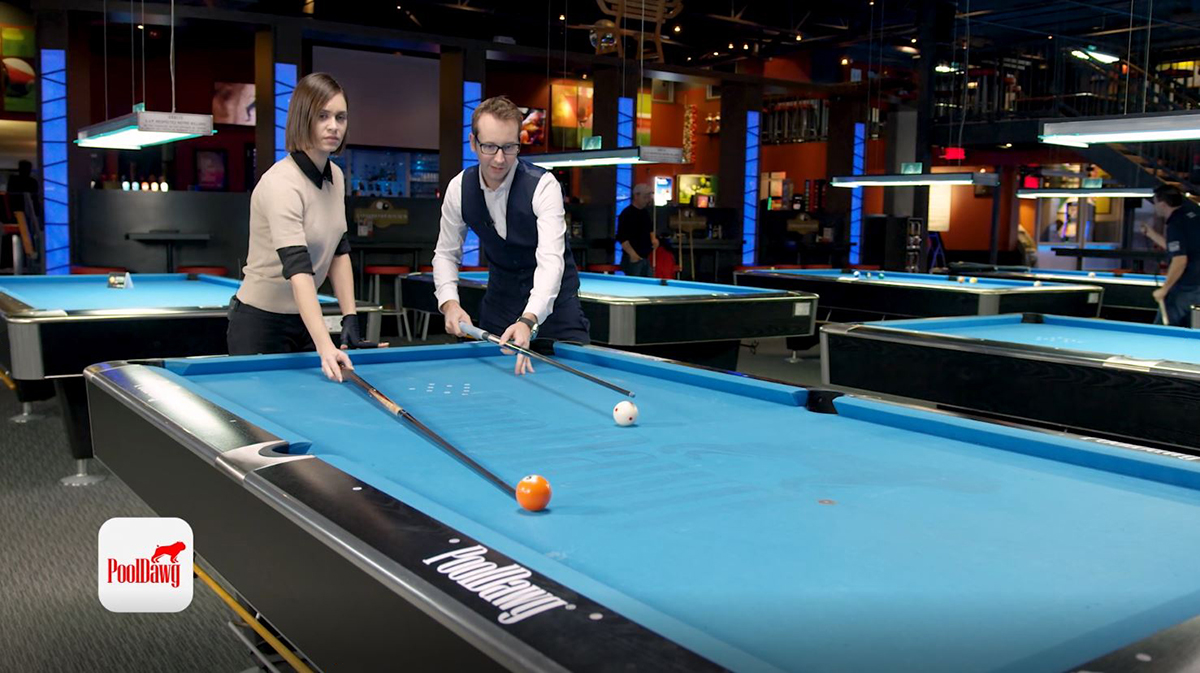
Now the next step is to go right there, draw a parallel line to her cue, into the front of the cue ball, right there. You’ve got to make sure it's parallel, which is probably right here. It's not necessarily easy to see. Once you visualize that, you have to remember, memorize it, this spot, which is where the end of my tip was, and her spot right there.
Now, all you have to do is connect the dots. You're literally connecting this spot to this spot. I know it sounds a little complex, but once you do it a few times and get it practiced, you're going to visualize it, and it's absolutely foolproof.
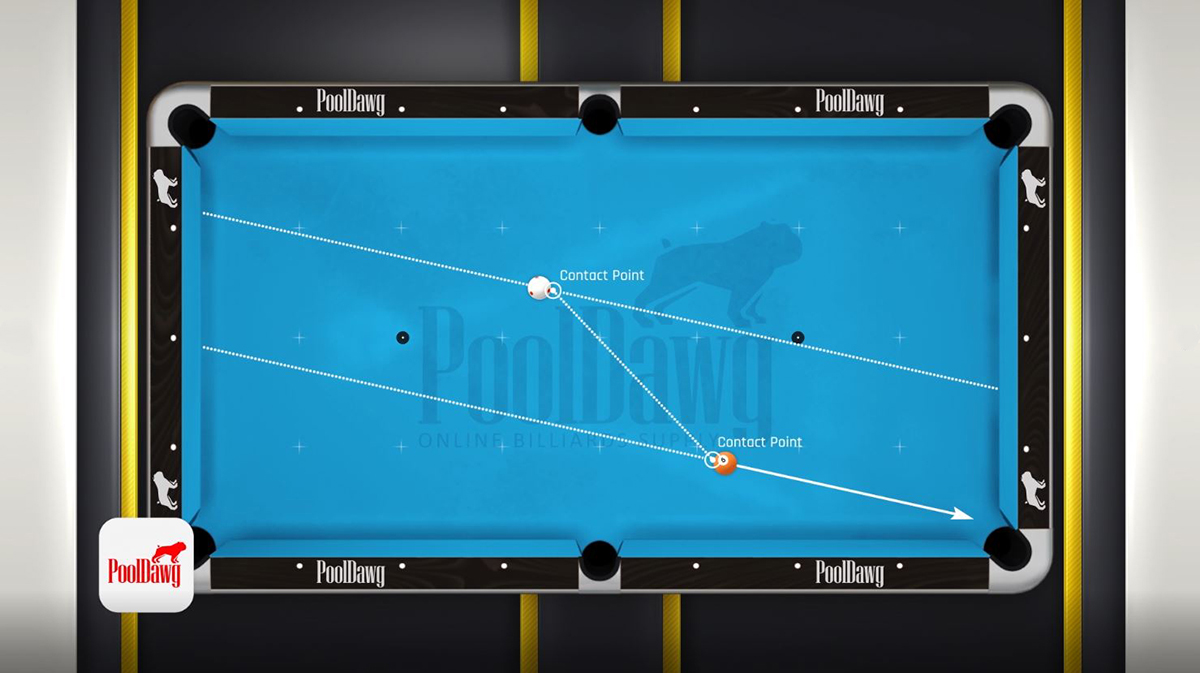
Let me try to demonstrate that and shoot the five in. Okay, so there was a pretty easy example. Let's put a few more, harder ones, so you guys can really see how powerful and accurate this system is on long thin cut. Really a must have in your arsenal.
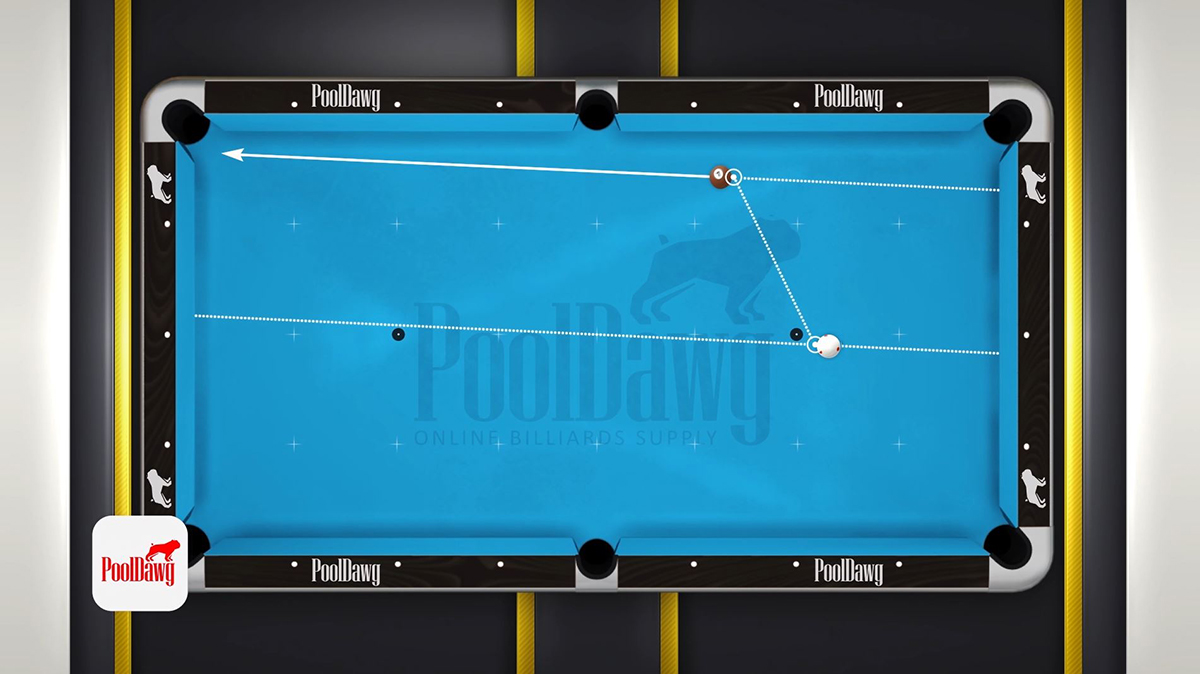
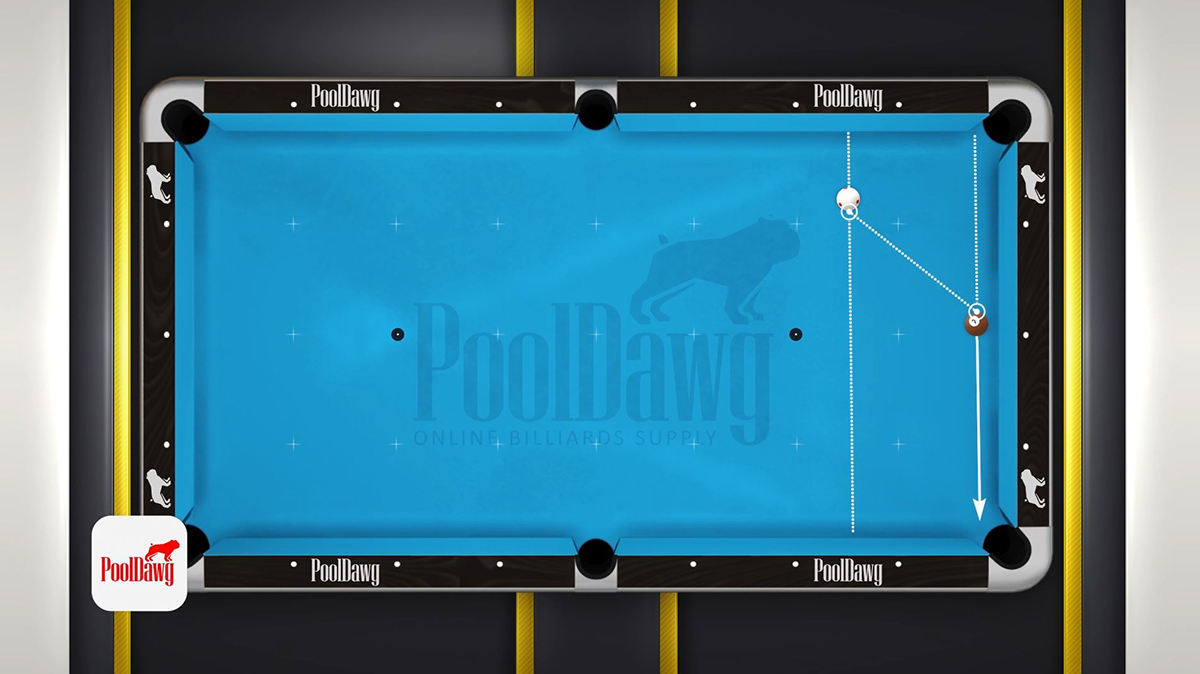
Center-to-Edge (CTE) Aiming System
The third aiming system is called the CTE method. Before we go any further, I want to address the big elephant in the room here.
DISCLAIMER!!!!
It's been going around for a while now in the recent year, CTE is sort of like a magical unicorn that every pool player is talking about, from beginner to well confirmed. And a lot of people talk about it, but not many quite know exactly what it's all about. Personally, I know I've never used it until this week. And so I did some research, a lot of research actually, and to my surprise there's not quite one CTE that's correct on the internet. You find a lot of versions, a lot of different versions, a lot of interpretation, but not one that we could actually rely on, that's sort of good enough in my opinion to be trusted.
Simply I think the reason is, a system implies it's a mathematical thing. In this case it's not really mathematical, but a perception. That means it's all suited for yourself, not your neighbor, not the next door player. It could be very different from one person to another. With that being said, don't take all my words for granted. I'm going to give you my interpretation of it, and my own variation.
This is the most basic version of CTE I found, CTE meaning center to edge. And this one is actually called the manual pivot. In my opinion it's more of a pivoting system than anything else. Anyway. Just go into the first part of the system here.
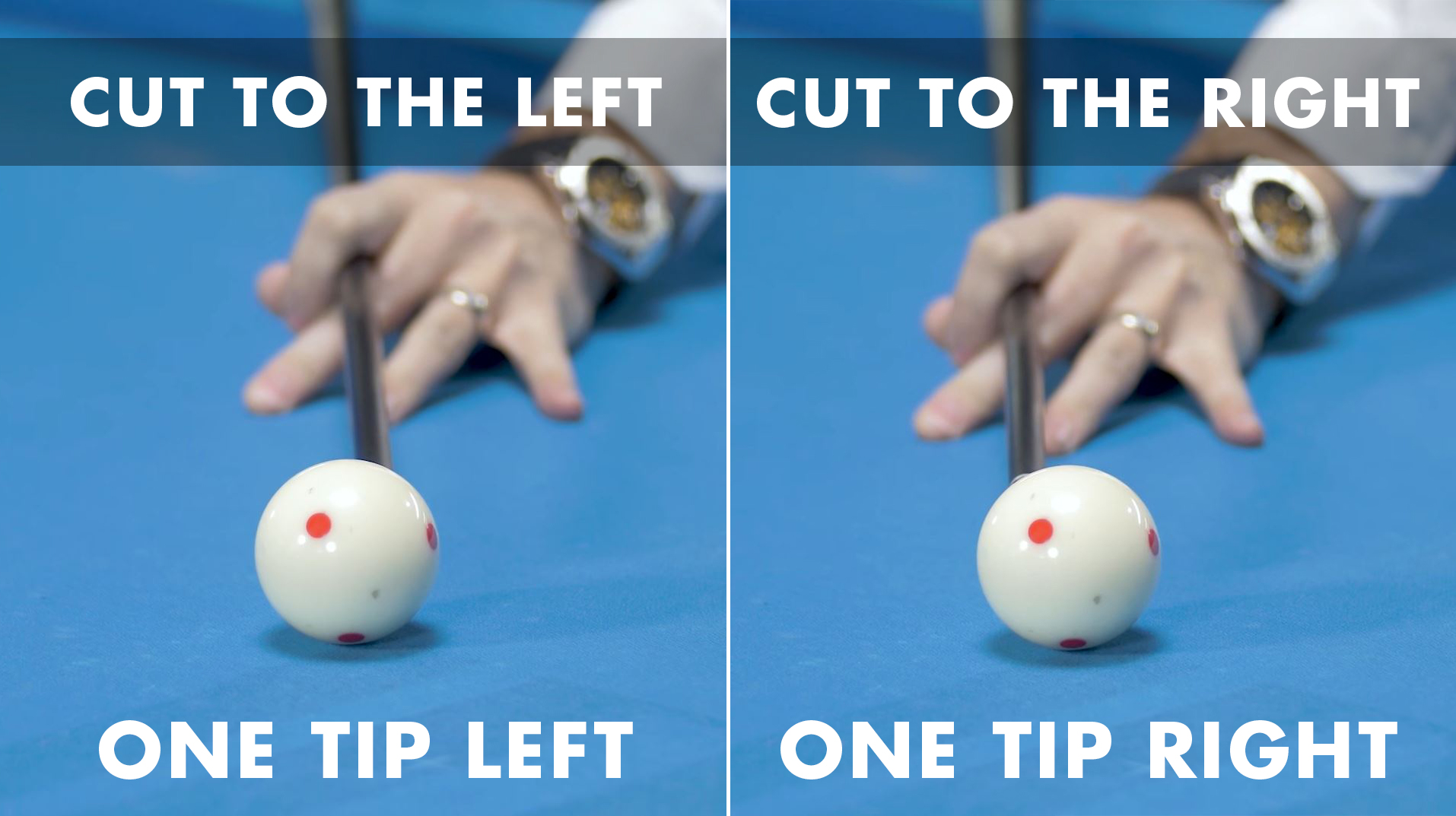
It's all about if you're going to cut a ball on the left or the right. If you're going to cut the ball on the left, you're going to go down with a tip of left. If you cut a ball on the right, you're going to do the same thing and go on the right. It's only one tip away from the center. While most people will go down on the ball into the center and then adjust with spin, in this particular system you literally go down with one tip of English already. It already takes some getting used to it.
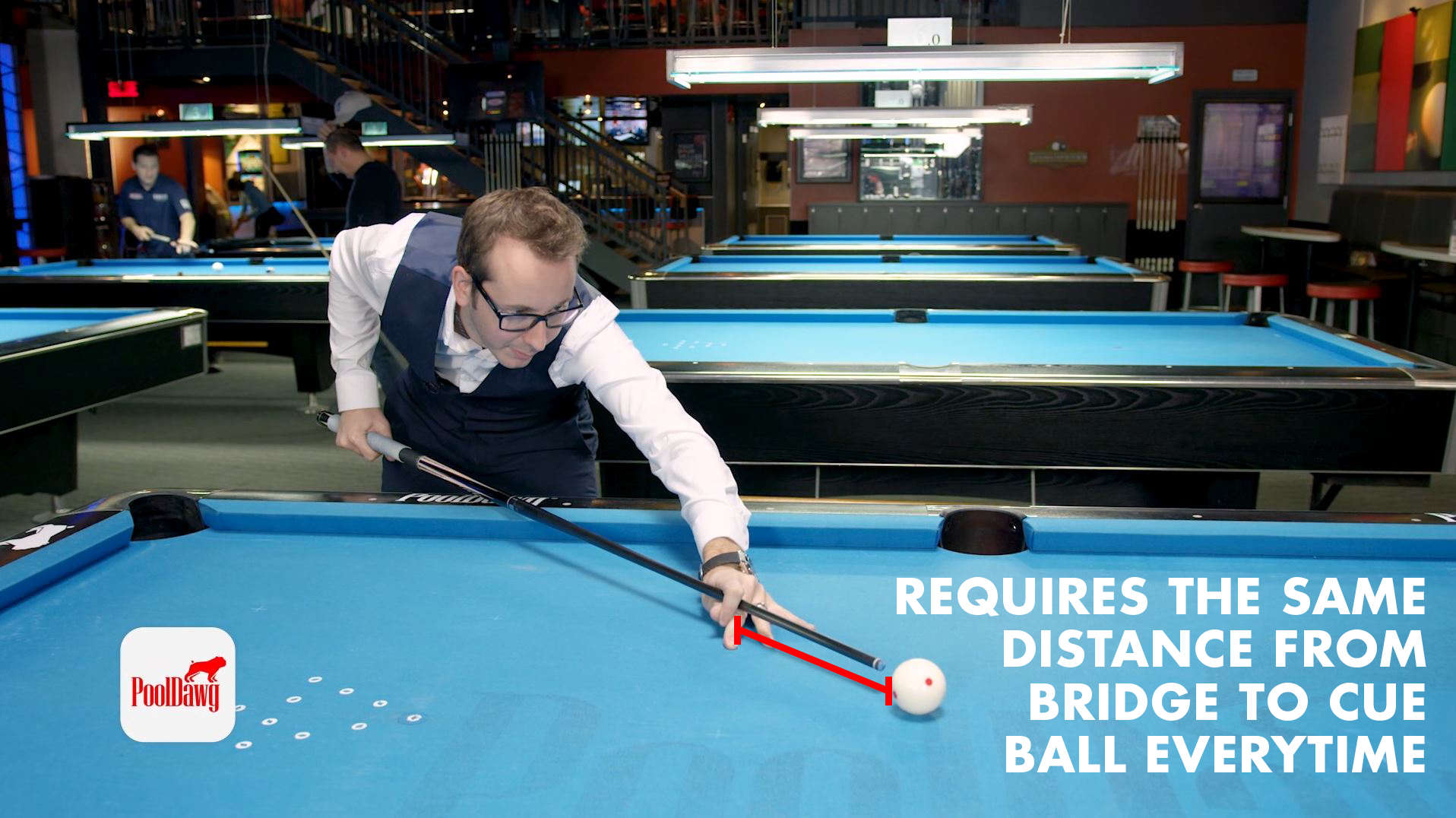
Now that's done. Let's say you're aiming a ball on the left side, you've got to make sure every time, for the system to work here, the stance is the same. Meaning it's almost robotic system, like this, and always the same. If you're not in one tip of English but two, or a half, it will not work. You will simply miss when you aim. Again, there, I'm going to cut a ball on the left, I'm on one tip English, and now this when the pivoting happen.
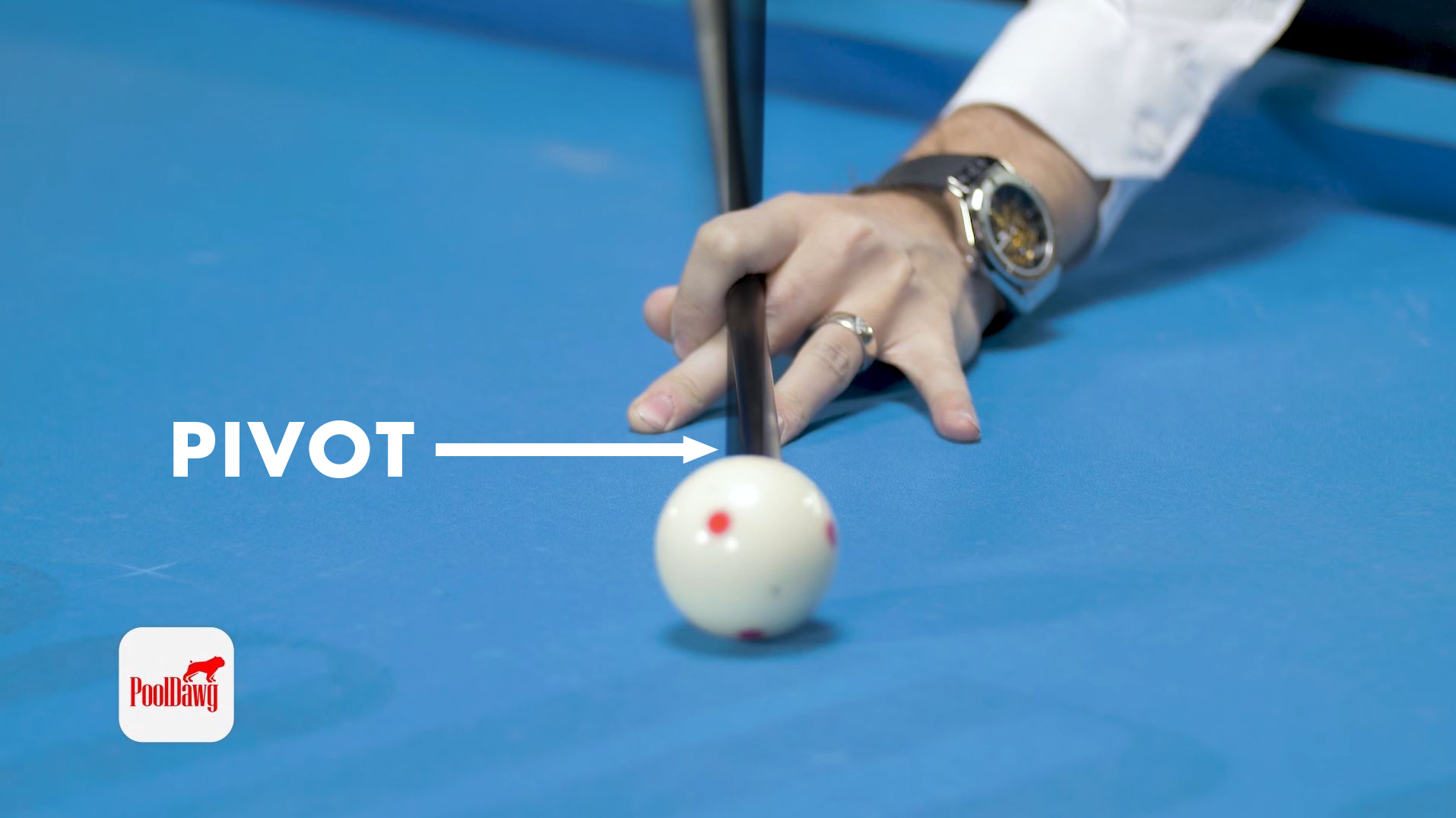
This pivoting is basically your right arm just shifting a little bit. It is really a very subtle movement, because you're right there, and you just have to do this. It's a very minor adjustment, it shouldn't really bother you, your legs, shouldn't bother your position. It's very minimal. Now this is what's going to happen with this, and we're going to see in a minute when I show you how to aim, is it's basically going to center you to the object ball and make you aim the right spot in the object ball.
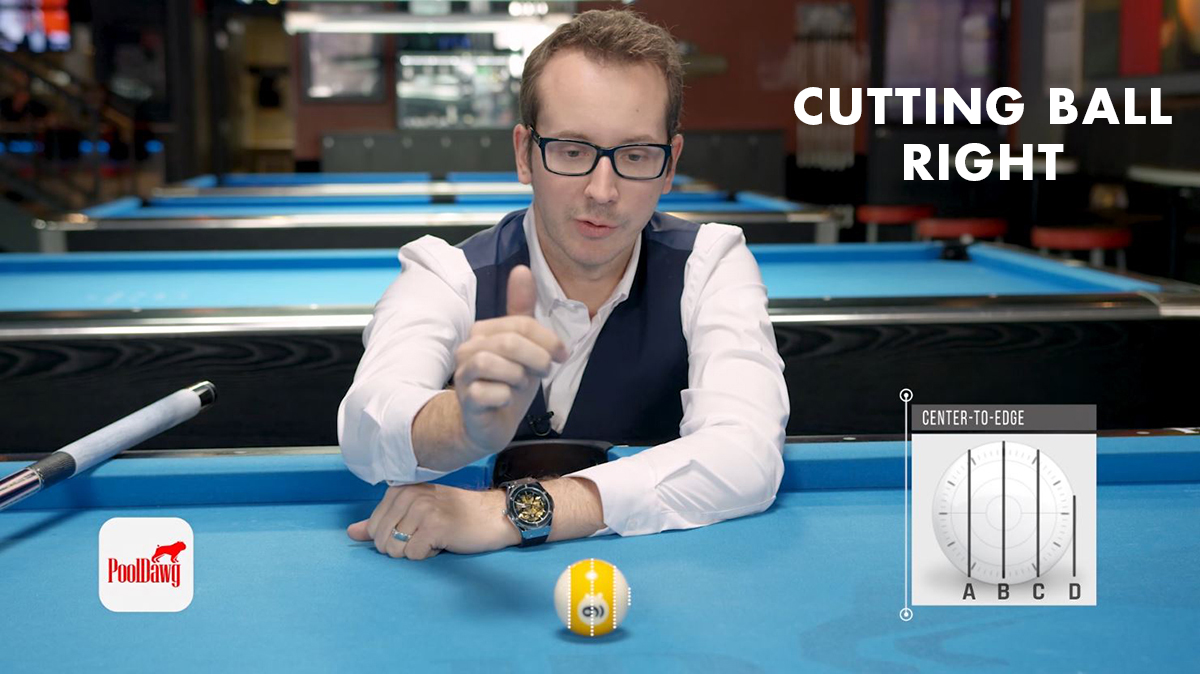
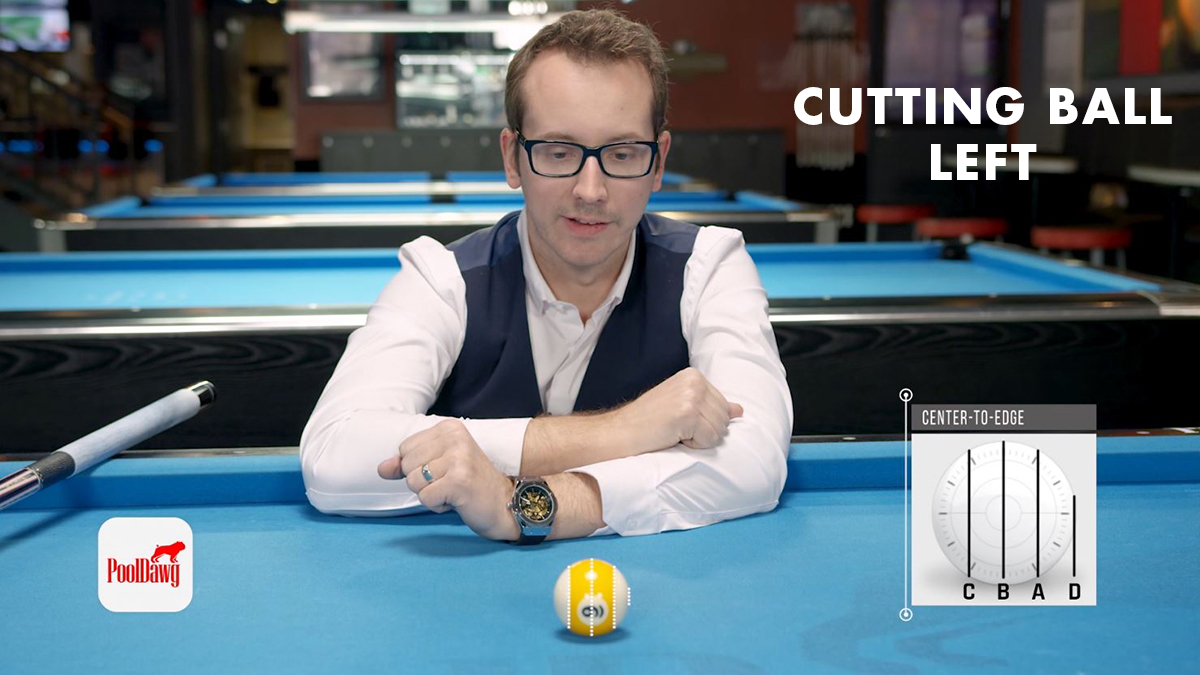
Next big aspect of the CTE is the object ball and how it's divided. This is probably one of the only things that I've seen on the internet, on all my research, that kind of everybody agrees on. There's basically A, which is the point here when the yellow band stops, B would be the middle of the ball, there would be C, the other side of the yellow band, and D would be the edge of the nine ball. That would also reverse being D, A, B, C, depending on where you hit the ball. And depending on which side, if you cut it left or right. The degrees of perception, this is what they call degrees of perception, this is 15 degrees, 30 degrees, 45 degree perception. Now again, keep in mind I am not the inventor. I merely just did some research on it. This is my take on it, and this is what we're going to use in order to make some balls.
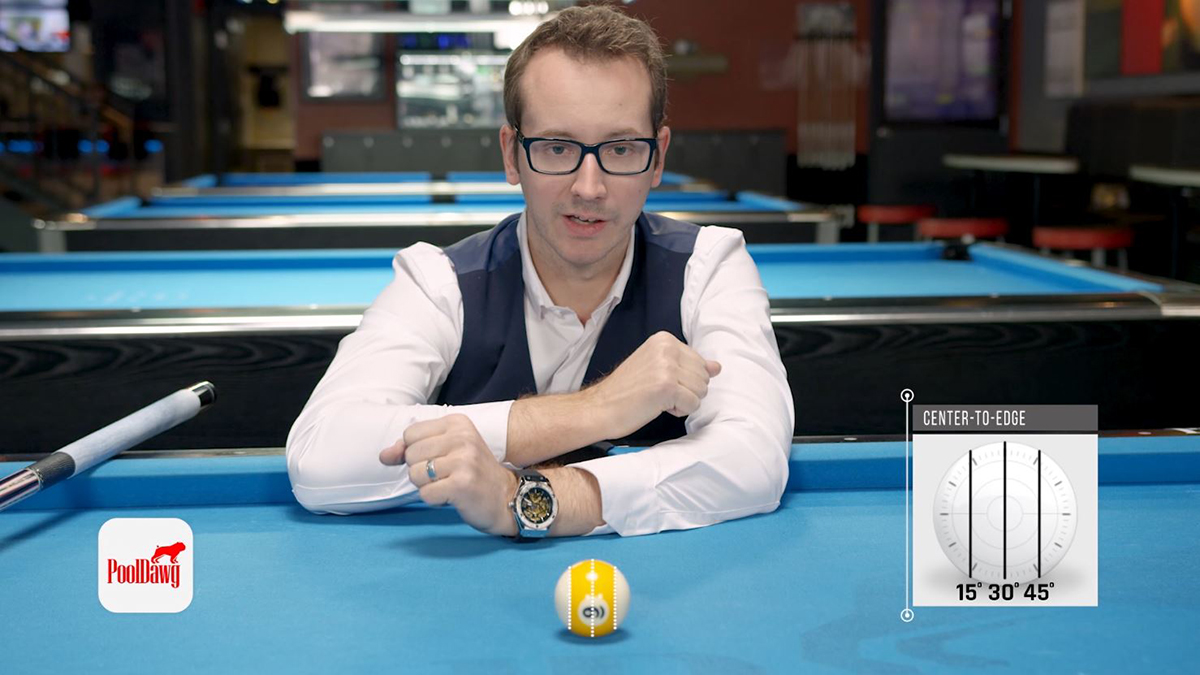
Now that we talk about the preliminary concept and how it sort of works, let's dive in into how to actually make a ball with CTE. In this case, we have a standard situation, cue ball here, nine ball down a little bit, and what we're going to do is try to make the nine ball in the side pocket. Pretty easy shot, but we're going to do it the CTE way. Now that's where its name really takes its importance, because instead of aiming from the center of the ball into the center of the object ball, like you do the ghost ball, you're going to aim an edge of the cue ball. Edge of the cue ball into the left side band of the nine ball. This is where it gets a little tricky with the system, is you sort of have to identify which perception of degree you're getting on the ball.
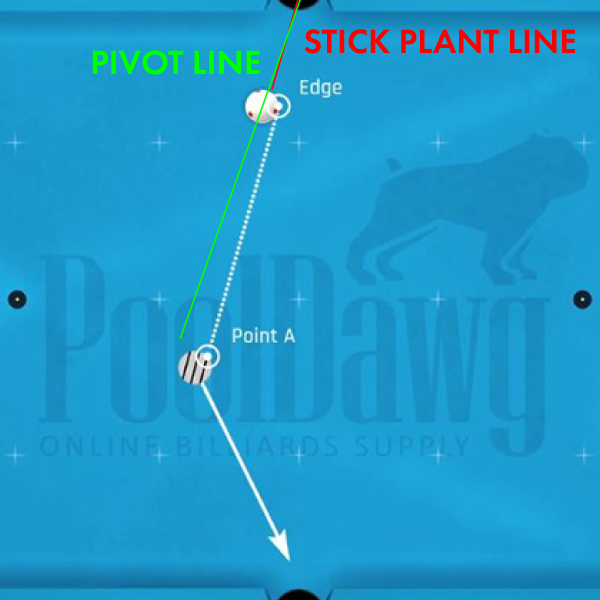
In this case I know, because I practiced the system a little bit. I know this is an A category, and because the pocket's on the left side of the line, I know it's a left sweep, meaning I'm going to go down with left English and then pivot. If the pocket was on the right side, I would go down with right and then pivot the other way. Now that we kind of identified that, the rest of the shot is pretty much like any standard shot. You have to step out of the box, look at your shot. The only difference is I'm going to look focused with the left edge of the cue ball, straight into the left side of the band, in the A point. I'm going to line them up and I'm never going to leave them from my sight. Very important.
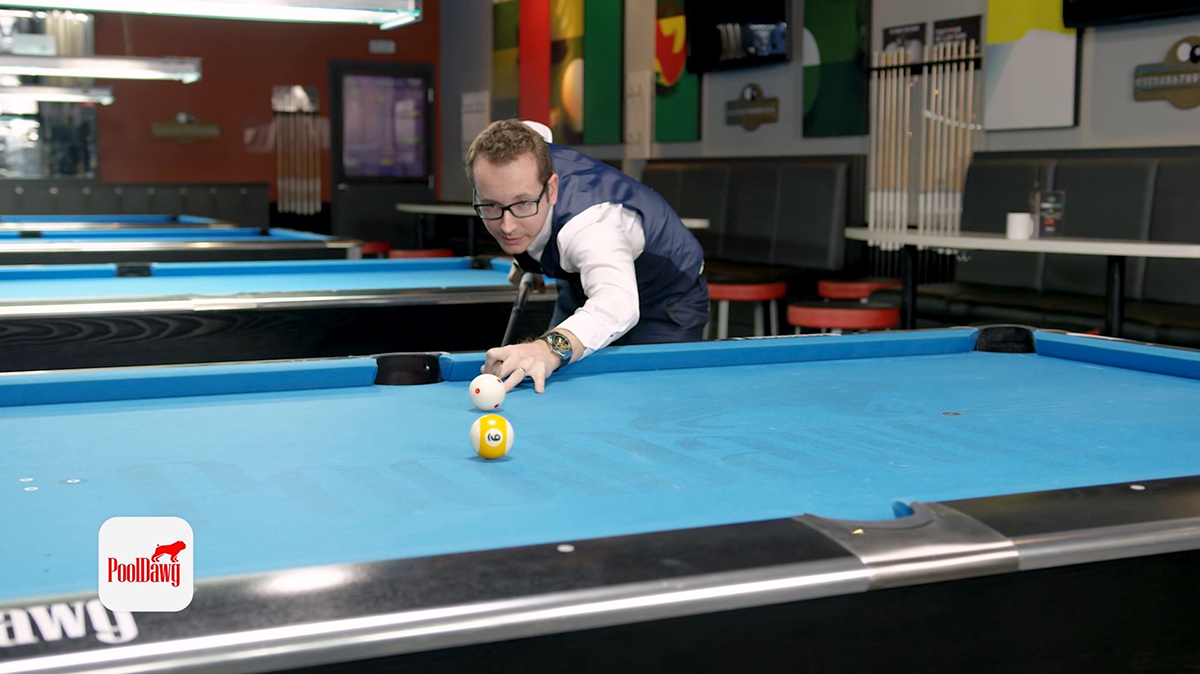
I go down, one tip of English. Now if this is not lined up, you have to get up. And my case here, I sort of missed my lineup so I'm going to go back out. Any other pool shot, same thing, I'm going to do it again. There. This time locked in. From there, all you need to do is this pivot thing, there, pivoting one tip, center ball. And the beauty of it is because it's all automatic now, all I got to do is just shoot the ball. I don't have to worry about looking anymore. Just there. And I could do a million things. I could look behind, could look on the left, could look on the right, because I'm already all set. I am basically good to go. That's why the CTE is so important, because it takes some pressure off you. Let's cover a few more examples now.
Here's another example. We have the cue ball here, 13 ball there. All we got to do is try to make the 13 in the corner. This is obviously a little more of a tough shot already. I mean, some people don't like that shot, and usually you'll see it, people are going to miss it a lot of time on the short rail out there. I'm going to do my CTE system here, but I know this time it's a B category. Again, this is practice, this is something you have to find by yourself, but it's more of a perception feel.
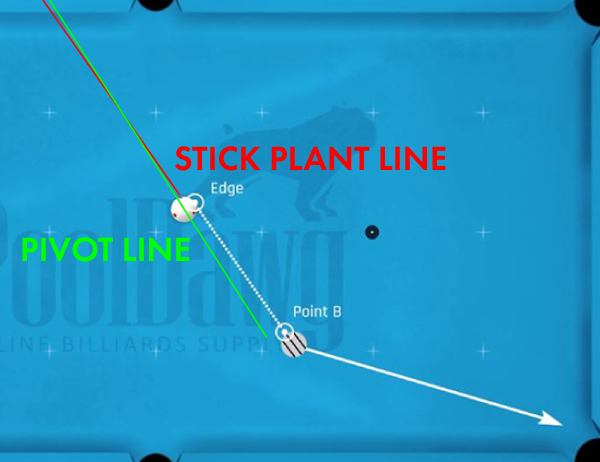
I'm going to do left edge of the cue ball, into the B, which is the center of the 13. Why am I doing left? Because, if I draw a line, the pocket's on the left side of it, not the right. So same thing. We're going to go from down there, out of the box, line up looking at the cue ball edge, the left edge into the center of the 13, go down with one tip of English, make sure it's center, pivot. And there, as you can see, it's really working. Let us do another example here.
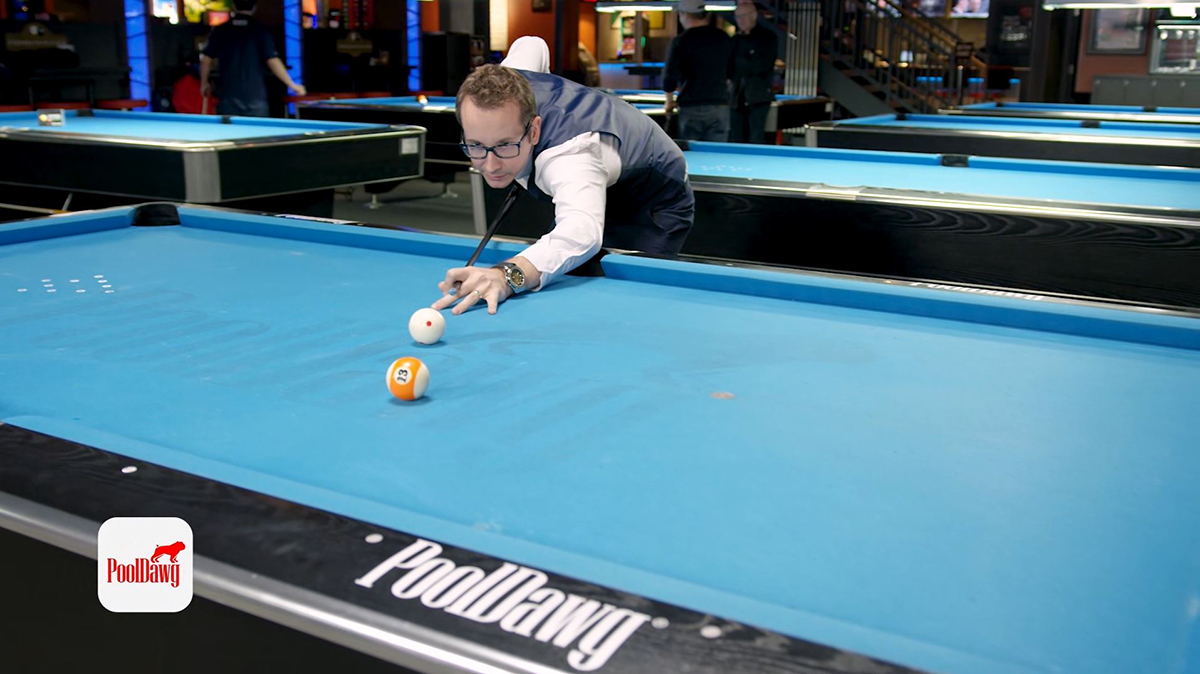
Third example here. We're now on a much more difficult shot. I'm going to have to hit the cue ball into the one, and cut the one ball in the right corner. Again, difficult shot that most people don't really like. Because we're going to the right side, again if you draw a line there, the pocket's on the right side, it's going to be a right sweep, meaning I'm going to go with right English and then pivot to the left. Okay, now we've got to find the familiar zone we're going to have. It's obviously not a C, it'll be too full. Not a B, still too full. It's an A. (OOPS, Florian forgot to flip the points for a right cut. It is the C aiming!) In this case, it's pretty simple. The only problem is we do not have the stripe anymore. You just have to remember to visualize sort of like that straight bend on the cue ball on that stripe ball.
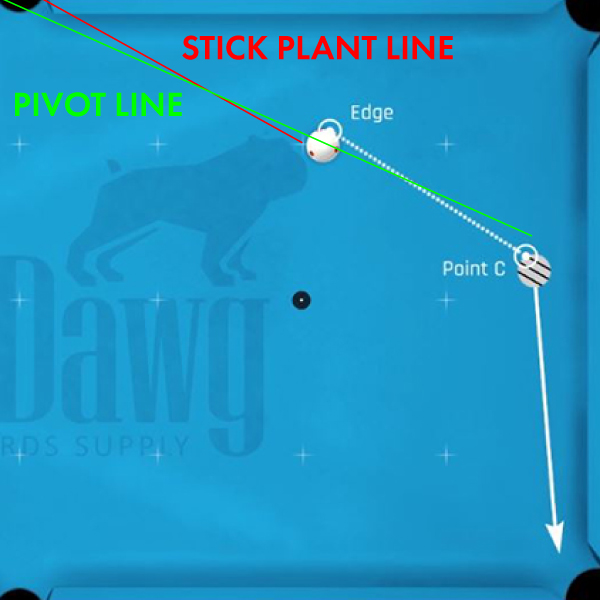
Once you visualize that, go down, one tip of right English, pivot, make the shot. I'm just going to do it. Again, step out of shot, visualize my A, never leaves my point of the eye, pivot, there. As you can see, this is really working. Even for myself, it took me a little while to get used to it, the idea that you're not going to the same spot, you're aiming and then pivoting. But after some practice, a few hours of practice to be honest with you, I find out it's actually really working because it takes some pressure out of you.
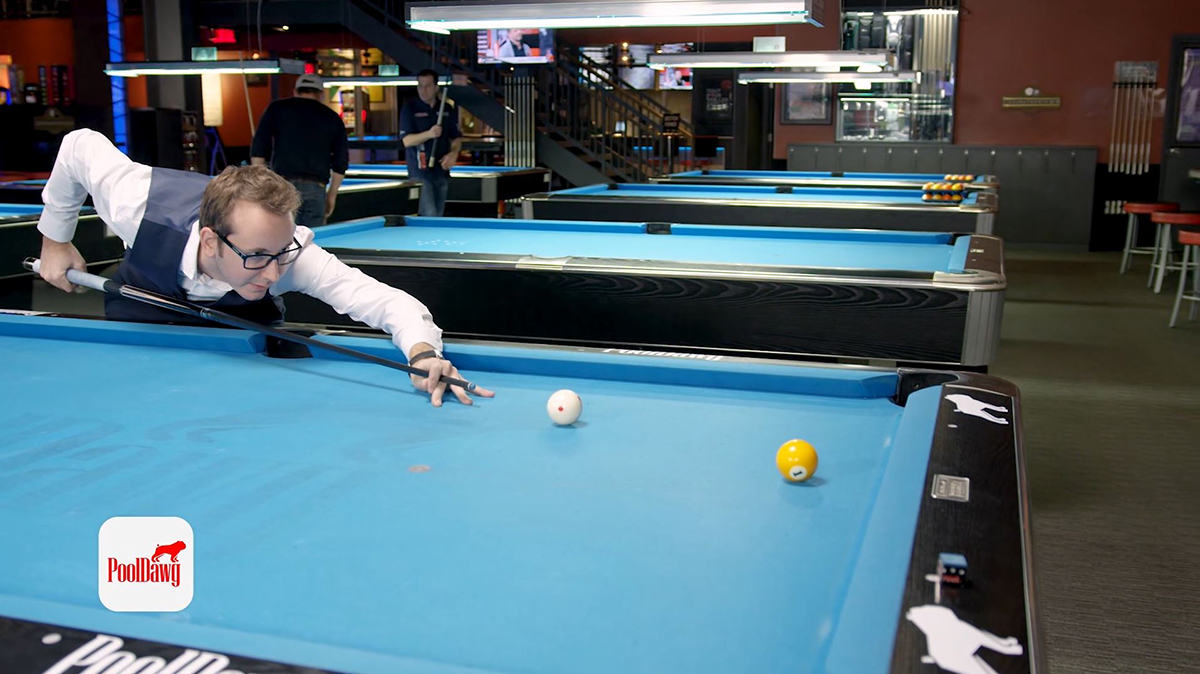
We have now a long shot, meaning the cue ball is going to try to hit the eight, make the eight in the corner. Now, because when I say long, it's basically over four diamond distance. Again, remember the CTE is not something you can learn overnight. This is something complicated. You need to practice, find your own version of it. All I can tell you is past four diamond, you need to do a reverse sweep.
Meaning in our case, if you think about everything I taught you right before that, it would have been a left sweep. The problem is if you do a left sweep, you're going to naturally miss the eight ball on the left side, on the thin side. I'm going to do a right sweep. First I got to find the category(Perception). I'm going to find my left edge of the cue ball and I'm going to line it up with the center of the eight ball. Again, this is because I know this is a B category, and this is because I worked out, I know exactly my perception.
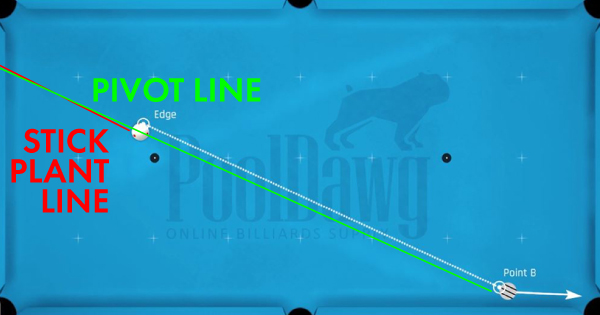
Now, instead of going with the left sweep, I'm going to go to the right sweep. Meaning I'm going to go down with one tip of right English, and then I'm going to pivot. I'm just going to do it properly here for you so you can see. Right there. One tip, pivot, there. Again, this is just something that you have to believe in, you have to make sure your mechanic is proper, that your descent is correct, and everything will go in line.
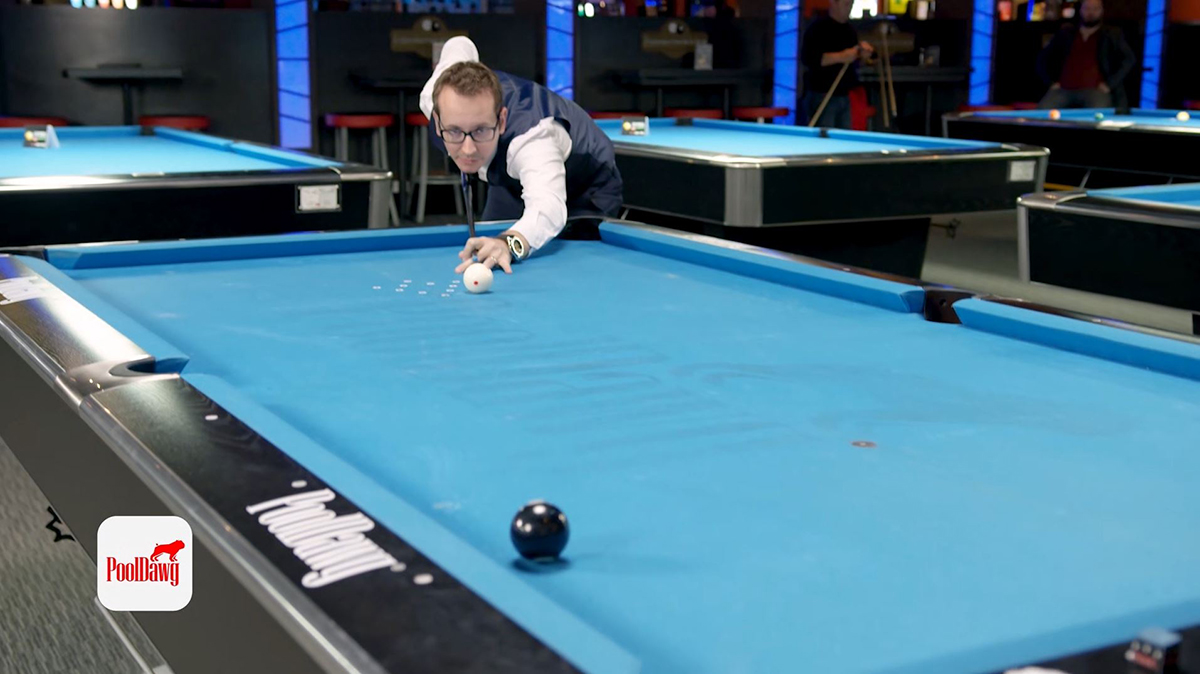
HAMB: Hit A Million Balls
Our fourth system, it's what I call the HAMB system. It actually is my favorite of all time. Asking what it stands for? H-A-M-B, HIT A MILLION BALLS. Because there's absolutely no substitute for practice. Whatever you're going to do, if you practice a lot you're going to build muscle memory over time, and you're going to know exactly where to hit the ball. When, where, and what to do with it. This is to my opinion the best ever. And I'm going to ask Valerie. What do you think? What's your favorite aiming system?
For me, my favorite is also the HAMB system, but I like, on some kinds of shot, to use the ghost system.Yeah. I think what she's trying to say is basically, whenever you're not confident as well, you might want to rely more on a system that's more mathematic or more systematic, rather than your instinct, your muscle memory. But at the end of the day, practice is the best. That's what's going to make you a great player.
Remember, as usual, please check out pooldawg.com for all your pool and billiards supply. And we really hope, truly hope this lesson helps you with your aiming.
- RELATED ARTICLES
- What The F&#k Are You Looking At? (A Guide To Aiming) – By Jennifer Barretta
- Three Rail Kick System - Part One (Cue Ball Near the Rail) – By Mikey Verkruyse
- How To Make Kick and Bank Shots – By Florian Kohler